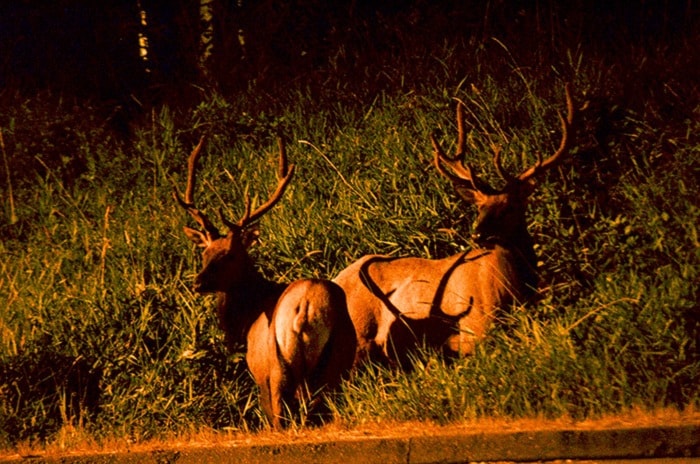Conservation officers in Maple Ridge are worried that the elk spotted in the Kanaka Creek area near the Lougheed Highway, in the last few weeks could become the target of poachers.
Cody Ambrose, with the Ministry of Environment, said the public should report if they see any suspicious people approaching the elk.
“Maple Ridge does have a number of known urban poachers in the area when it comes to deer,” warned Ambrose.
“This is a concern for us.”
A pair of elk have been frequent visitors to the Albion flats-Kanaka Creek area, often walking up to the northern side of the Lougheed Highway.
Ambrose said his office has received numerous calls from residents reporting the sightings and said his office has been monitoring the situation. He said people need to be vigilant while driving in the area, checking their speed as they approach the area along Lougheed Highway and 105th Avenue and the Haney Bypass.
The elk are suspected to be from the original herd of 23 that was relocated into Upper Pitt Lake in January 2005.
The Ministry of Environment took on the project in order to repopulate the area with the Roosevelt elk, which were native to the area before being wiped out by hunters at the turn of the 20th Century.
The ministry also placed 20 elk in the Indian River area in 2006 and the Upper Stave Lake area in 2007. The relocated elk come from the Sunshine Coast and Powell River area. The original herd were brought to the Lower Mainland from Vancouver Island in the mid-80s, according to the ministry.
Darryl Reynolds, a wildlife biologist with the South Coast region of the Ministry of Forests, Lands, and Natural Resource Operations, said he found the original reports somewhat surprising, however the fact that elk have made their way down Kanaka Creek is a good sign that the program is taking hold.
The ministry repopulated the area in the Upper Pitt Lake in order to take some pressure off black-tail deer as a food source for cougars, as well as to provide other food for wolves and bears.
“I’m a little surprised that they found this little oasis in the middle of a concrete jungle,” said Reynolds.
“But this is evidence that the population is doing really well. It’s good to see the success of the program.”
He said the elk aren’t likely to cross the highway and probably won’t be around for much longer. “They are a pair of young males who are stalking up on their fat supplies before fall, said Reynolds.
“Come September they are going to make their way back up the hills for mating season. Nature will call.”
As for the predators the elk were meant to attract, Reynolds dismissed any notion that the public should be concerned.
He said it’s extremely unlikely wolves or bears would stalk an animal so close to an urban population.
Reynolds did caution about the public about getting too close to the wild animals. The elk weigh as much as 250 kilograms and will protect themselves if threatened. People should also keep their dogs on leash in the area. The elk have been known to turn on dogs if they’ve been chased.
Anyone who sees anything suspicious can call the conservation office at 1-877-952-7277.
